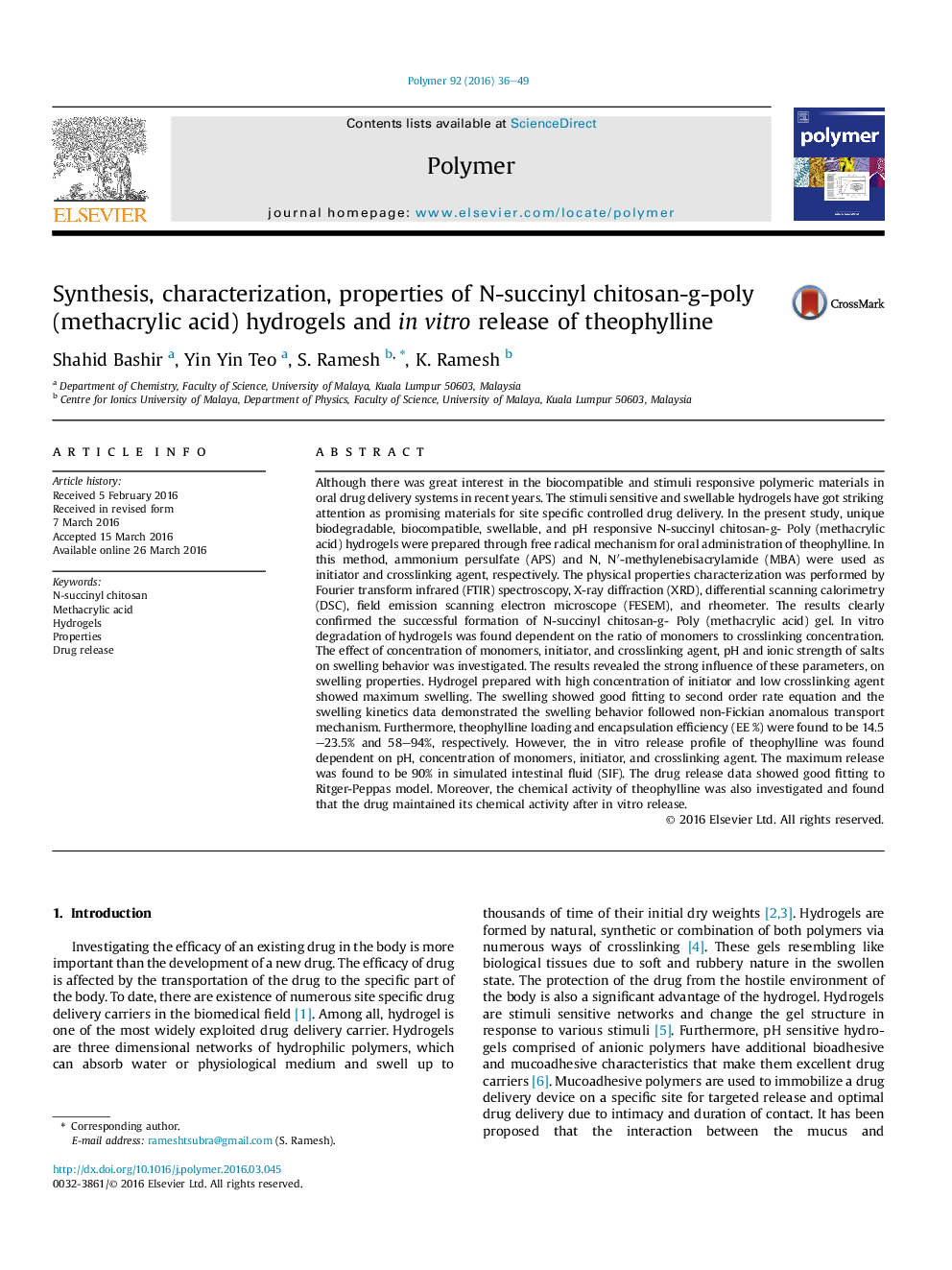| Article ID | Journal | Published Year | Pages | File Type |
|---|---|---|---|---|
| 5179302 | Polymer | 2016 | 14 Pages |
â¢We synthesized biodegradable NSC-g-Poly (MAA) hydrogels having excellent mechanical and swelling properties.â¢The FTIR, XRD, and DSC analysis confirmed the successful synthesis of hydrogel.â¢There is good agreement between experimental and theoretically calculated swelling and diffusion kinetics.â¢Theophylline retained its activity even after in vitro release.â¢Results suggest that NSC-g-Poly (MAA) hydrogels are promising material for targeted drug delivery application.
Although there was great interest in the biocompatible and stimuli responsive polymeric materials in oral drug delivery systems in recent years. The stimuli sensitive and swellable hydrogels have got striking attention as promising materials for site specific controlled drug delivery. In the present study, unique biodegradable, biocompatible, swellable, and pH responsive N-succinyl chitosan-g- Poly (methacrylic acid) hydrogels were prepared through free radical mechanism for oral administration of theophylline. In this method, ammonium persulfate (APS) and N, Nâ²-methylenebisacrylamide (MBA) were used as initiator and crosslinking agent, respectively. The physical properties characterization was performed by Fourier transform infrared (FTIR) spectroscopy, X-ray diffraction (XRD), differential scanning calorimetry (DSC), field emission scanning electron microscope (FESEM), and rheometer. The results clearly confirmed the successful formation of N-succinyl chitosan-g- Poly (methacrylic acid) gel. In vitro degradation of hydrogels was found dependent on the ratio of monomers to crosslinking concentration. The effect of concentration of monomers, initiator, and crosslinking agent, pH and ionic strength of salts on swelling behavior was investigated. The results revealed the strong influence of these parameters, on swelling properties. Hydrogel prepared with high concentration of initiator and low crosslinking agent showed maximum swelling. The swelling showed good fitting to second order rate equation and the swelling kinetics data demonstrated the swelling behavior followed non-Fickian anomalous transport mechanism. Furthermore, theophylline loading and encapsulation efficiency (EE %) were found to be 14.5-23.5% and 58-94%, respectively. However, the in vitro release profile of theophylline was found dependent on pH, concentration of monomers, initiator, and crosslinking agent. The maximum release was found to be 90% in simulated intestinal fluid (SIF). The drug release data showed good fitting to Ritger-Peppas model. Moreover, the chemical activity of theophylline was also investigated and found that the drug maintained its chemical activity after in vitro release.
Graphical abstractDownload high-res image (249KB)Download full-size image
